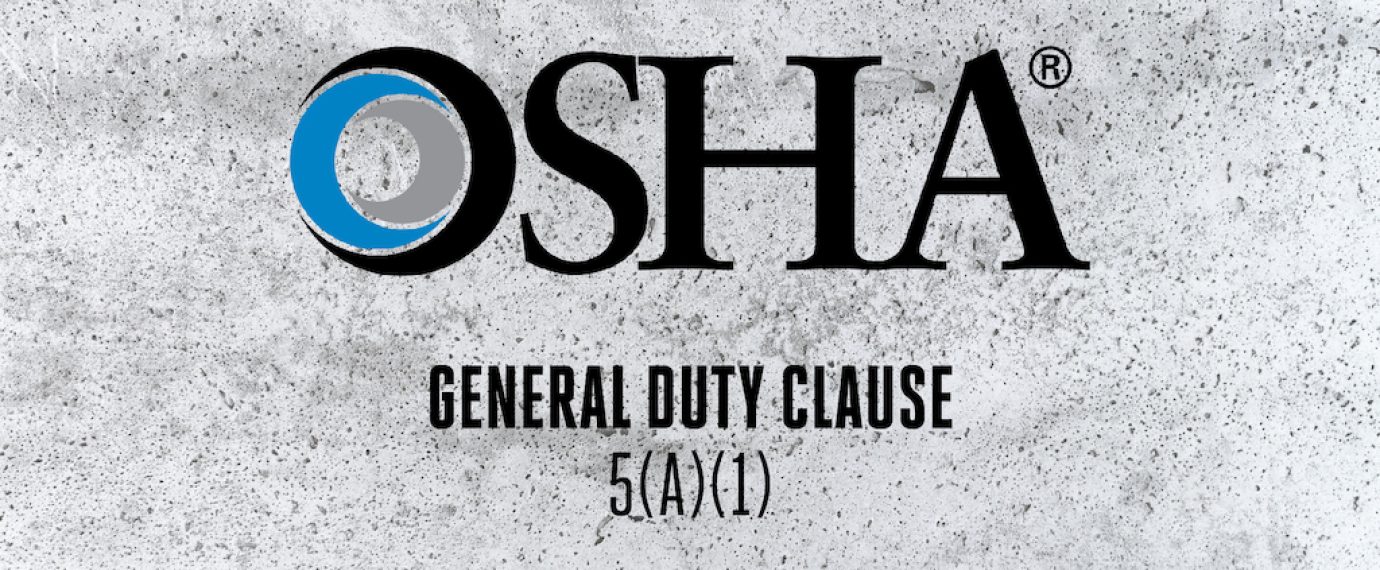While you may be familiar with OSHA inspections that result in violations of 29 CFR 1910, 1926, 1904, etc., have you experienced a citation that references the General Duty Clause? Section 5(a)(1) of the Occupational Safety and Health (OSH) Act of 1970 is commonly known as the General Duty Clause. It states, in part: “(a) Each employer — (1) shall furnish to each of his employees employment and a place of employment which are free from recognized hazards that are causing or are likely to cause death or serious physical harm to his employees.”
The General Duty Clause has an important role despite being infrequently cited in laws governing the occupational health and safety of workers in the United States. Estimates run that less than 2% of citations issued by OSHA each year are General Duty Clause related. One review found that the highest number of General Duty citations occurred in 1979 and comprised 2.7% of total citations for that year.
It is not difficult to understand why General Duty Clause violations make up a relatively small percentage of citations. Essentially, it comes down to four criteria points that OSHA must be able to demonstrate and prove for a General Duty Clause citation to be issued:
- The employer failed to keep the workplace free of a hazard to which employees of that employer were exposed;
- The hazard was recognized;
- The hazard was causing or was likely to cause death or serious physical harm; and
- There was a feasible and useful method to correct the hazard.
However, the importance and usefulness of the General Duty Clause can be seen from the types of violations it is used to enforce by OSHA. General Duty Clause violations are typically found when an incident occurs where employees are injured or likely would be injured from workplace conditions not covered by an already-established OSHA standard, but where guidance can be found from various other sources: consensus standards, industry-specific recognized practices, manufacturer’s recommendations of safe use of their products, or other state, local, and federal laws, etc. The more commonly found conditions that fall under possible General Duty Clause violations are:
- Ergonomics and musculoskeletal disorders
- Exposure to respiratory hazards not covered by a federal OSHA permissible exposure limit (but recognized through NIOSH, ACGIH, state OSHA, etc.)
- Failing to anchor or secure industrial racking
- Heat/cold-related injuries (heat stress, frostbite, etc.)
- Equipment inspection and user trainings not conducted
- Workplace violence
- Pandemic and other infectious disease-related exposures (COVID-19)
While not every injury or unsafe condition is applicable to a General Duty Clause violation, OSHA inspectors can use them to correct conditions at a worksite that otherwise would not be enforceable through a direct standard. Knowing that these means are available to OSHA should incentivize employers to understand their obligation to provide a safe workplace for all employees.



